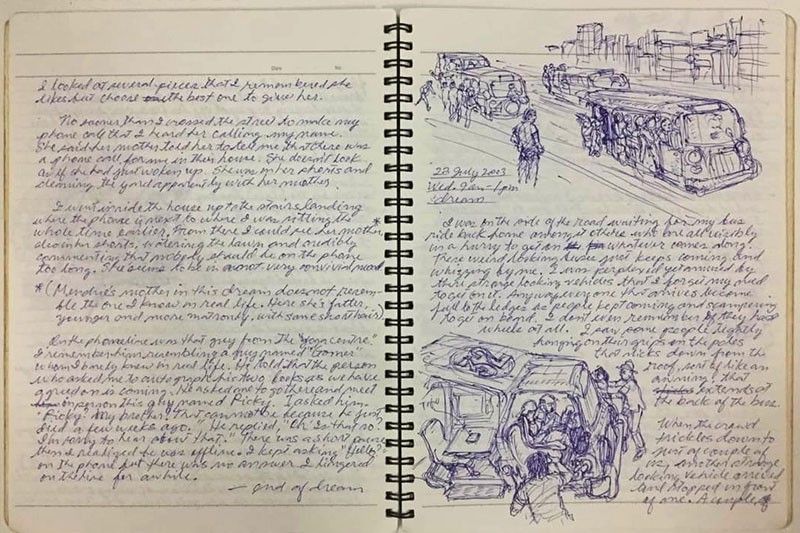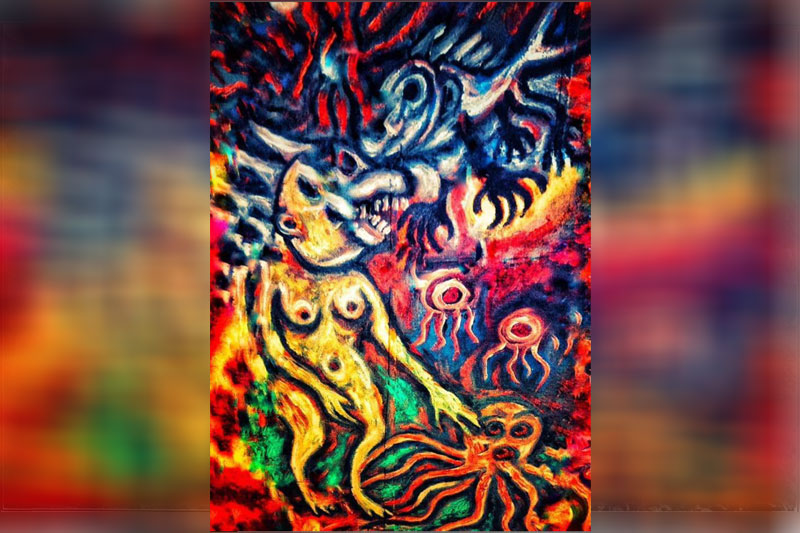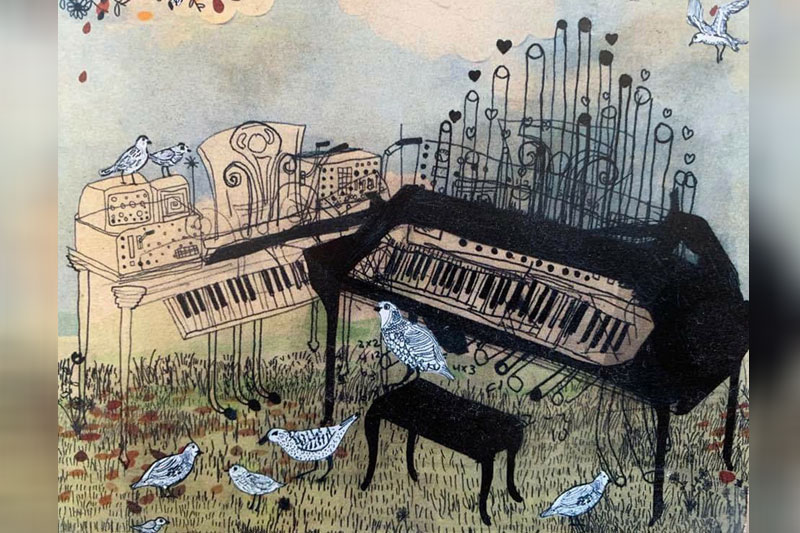Lost frames: Found art at a standstill


Stumbled upon lost frames on social media, random screenings of independent shorts by local filmmakers, including Roxlee’s Juan Gulay (Johnny Veggie) from the early 2000s, about an itinerant farmer in the backwoods of time and a stranger who passes through his lair, starring the maverick artist himself in all his poker-faced demeanor.
That’s how we pass the quarantine hours surfing the net of debris (Faces) and reverie (Color it Red), as releases from the galleries come few and far between, except for the occasional update and please bear with us, currently experiencing virulent technical difficulty. It’s the only way Filipinos can cope, but one has to live and survive on so little bandwidth.
From faraway Oslo to the suburbs of Cainta, from Davao to Hong Kong and parts and crannies in between, various artists are posting their latest works and photos, short of commentary or just plain self-exorcising the demons of boredom. Shelter in place, yes; but the heart is an empty highway.
The cartoonist Roxlee is turning into a cat, his drawings would suggest. One of them posing with legs crossed. The artist has come a long way from those primal jousts at the Paluwagan Canal, at the end of Masaya Street, UP Village, where, tired of smashing beer bottles, he would simply throw a plastic saucer emptied of its peanuts to the gurgling water below.

The pioneer of Philippine short film animation is locked down in his multistory abode in Cainta, which during the time of Ondoy served as some kind of Noah’s Ark for his neighbors, even if they didn’t come in pairs. From the upper floors of that stack of studios you could hear the hard rain about to fall, approaching in the distance like a stampede of horses.
On the other hand, another graphic artist Benjie Lontoc is wrapping up his tour of duty in the restaurant business in the Norwegian capital, taking myriad photos of the city with his iPhone, constantly experimenting with images captured in his viewfinder, including the way light bounces off glass windows of buildings.
The expat artist visited the islands earlier this year, about the time the virus hiding in plain sight was starting to make its presence felt. The guy was exploring the roads of the metropolis with his camera, coming up with possible studies for future prints or woodcuts.

In Hong Kong, rambling vegan man Arnel Agawin has shared parts of his dream log, barely decipherable as most dreams tend to be, but not one to be ignored. He’s certainly on my list of most underrated if not overlooked artists, keeping a profile so low you would trip on it. What he does is, upon waking from a particularly vivid dream, he goes to his sketchbook diary to put it in writing/drawing before the images are lost completely. These are frames retrieved before disintegrating and publishers should take a look at this unusual experiment in illustration and calligraphy.
Mixed media and watercolor live on in Davao City where painter and retired newspaper illustrator Ludwig Ilio hides out in his residence numbered 123 off central park, a recluse not necessarily underwater but surely six feet away, distancia amigo don’t stand so close to the painting.
Been years since he packed up his bags from Singapore, finally getting tired of being told what to draw so as not to upset the authorities. But Big Brother can only watch so much, and the closed-circuit eye would be hard put to make the journey across seas, not to mention having to deal with shut borders.
Ilio’s uncle the poet Dominador Ilio had inscribed a novel of his, during one such session on UP Diliman campus — Guerrilla Memoirs, he wrote, was something akin to Michener’s Tales of the South Pacific, in that it was a pastiche of history, folk tale, fiction.
The elder Ilio, may God rest his soul, was from Malinao, Aklan, province from where hail the 19 martyrs of the Philippine revolution against Spain.
Malinao town is also where science writer Paul Icamina plans to set up the Candido Iban Print Press library, named after one of the martyrs and catering mostly to seniors and similarly idle out of school youths.
The initial batches of donated books have been turned over to the curator, including titles from Ricky Lo (not Lee) to Camilo Villanueva (not Osias), all for vetting, the better to encourage the reclusive Aklanons to read. At the Eat Yourself Bankrupt resto in Robinsons Manila weeks before the standstill, Icamina had said Cavite only has 13 martyrs, Aklan has 19.
Meanwhile, gallery owner Tina Fernandez has posted a painting of young Tosha Albor’s “Smoke Field,” a study in watercolor, acrylic, graphite, coffee on paper.
And whatever happened to random sampler MM Yu, whose photos and found objects littered the galleries in a new lambent light.
Soon the sweet sound of trains will again be heard overhead, passing by Archie Ocloss’ “Bakwit” mural at the College of St. Benilde: even the homeless and Juan Gapang must shelter in no place, and what doesn’t kill us can only turn quarantine into art, a semblance of it and the space between.



















